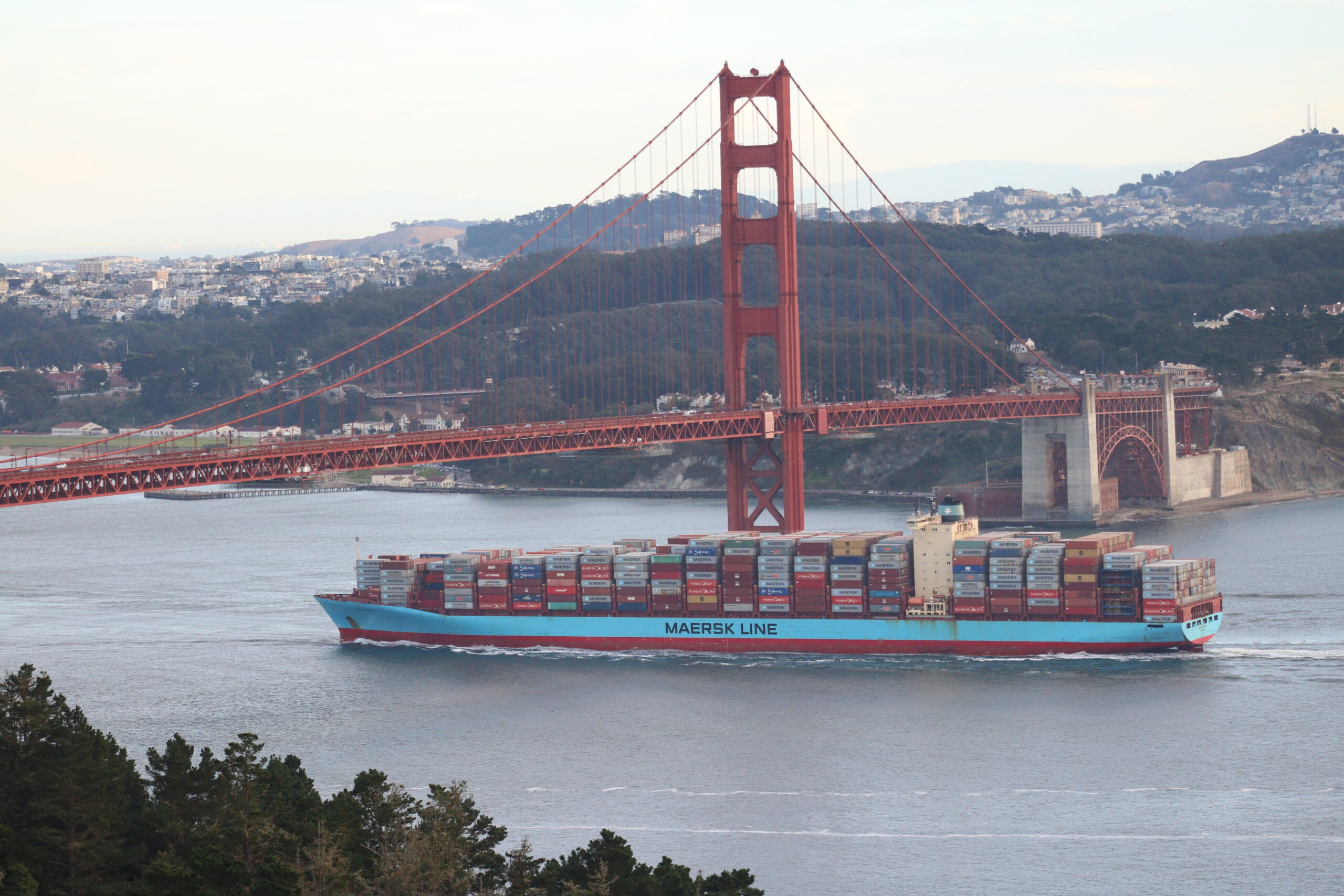There’s a subtle shift running through Maersk’s latest results, something steadier than the volatility of the last few years. The headline numbers show a company adjusting to a post-boom environment: revenue down year-on-year because freight rates have normalized, profitability lower than the pandemic’s distorted peaks. Yet the tone of the quarter feels more confident than those surface figures suggest. The Ocean business isn’t riding the extraordinary price spikes of 2021–2022 anymore; it’s leaning into scale, efficiency, and network design. Logistics & Services is slowly turning into the consistent-margin engine Maersk always claimed it could be. Terminals are operating close to optimal capacity and throwing off stronger returns than many would have predicted. The fireworks have faded, but the scaffolding of a more resilient business is clearly in place.

Shot with Canon EOS R6 Mark III and RF45mm F1.2 STM
Ocean tells the story of the adjustment most clearly. Volumes rose 7% year-on-year, particularly on Asia export routes, and fleet utilisation held at around 94%. So demand is there. The constraint is price: freight rates are down roughly a third from last year, which compresses margins heavily. EBIT dropped sharply compared with the extraordinary prior-year levels. But instead of scrambling for pricing power that isn’t there, Maersk leaned into operational control—lower bunker costs helped, and the Gemini cooperation with Hapag-Lloyd is already proving its cost and reliability benefits. The business isn’t trying to resurrect the pandemic windfall model. It’s learning to operate sustainably at equilibrium.
Logistics & Services continued its quiet transformation. Revenue grew modestly, but EBIT margins climbed to around 5.5%, helped by stronger performance in warehousing, fulfillment operations, and better cost management. It’s incremental progress—no grand proclamations, no flashy market share grabs—but it’s moving in the direction Maersk has been promising for years: a logistics company that isn’t defined solely by shipping rates, but by integrated network value. It’s slow work. But it’s beginning to look real.
Terminals, though, are where the quarter genuinely shines. Volume increased across key global regions, driving utilisation toward the upper limits of efficiency. EBIT margins surged close to 40%—a level that shows how powerful terminal economics can become when throughput is high and pricing holds steady. Ports are leverage points in global trade: they don’t just move containers; they determine the rhythm and cost structure of entire supply chains. Maersk is benefiting from owning those bottlenecks at a moment when the world continues to move goods, even if the narrative suggests otherwise.
And this brings us to the meaningful signal embedded in the quarter: Maersk raised its full-year outlook, and the CEO explicitly noted that global trade is proving “more resilient than feared.” That line deserves attention. For the past few years, there’s been a prevailing assumption that global trade is in retreat—threatened by tariffs, reshoring, trade wars, supply chain nationalism, even the philosophical unraveling of globalization itself. And yet, when you look at the flows of actual goods—not the headlines—trade hasn’t collapsed. It has rerouted, diversified, and reorganized. In other words, it adapted. Maersk’s performance is a real-world indicator of where global trade is heading: not toward fragmentation, but toward a more distributed, multi-lane architecture. Goods still move. The paths just shift.
Cash flow was lower compared to last year, but that reflects investment rather than weakness. CAPEX is up, focused on network modernization and terminal expansion. And Maersk continued to buy back shares—more than half of the planned USD 2bn already executed. You don’t continue buybacks if you think your market is weakening. You do it when you’re confident the foundation you’re building is solid.
So the story this quarter isn’t one of rebound or decline—it’s normalization. A new normal in which shipping doesn’t dominate earnings, logistics margins strengthen, terminals command pricing power, and global trade remains a living, adaptive system despite political noise. Maersk isn’t trying to recreate the past cycle. It’s building for the next long phase of global commerce.
And if Maersk is the pulse of world trade—and it often is—then the pulse is steady. Not booming. Not crashing. Just steady. And that is its own kind of signal.